Study on Influencing Factors of Hydraulic Engineered Cementitious Composites Layer Bonding Performance
Abstract
:1. Introduction
2. Materials and Methods
2.1. Experimental Raw Materials and Properties
2.2. Material Mixing Ratio
2.3. Test Methods
2.3.1. HECC Mixing Process
2.3.2. Preparation of Specimens
2.3.3. Layer Bonding Performance Test Method
2.3.4. Quantitative Analysis of Substrate Saturation
2.3.5. Surface Roughness Creation Methods and Measurement Methods
3. Results and Discussion
3.1. Basic Mechanical Properties of Materials
3.2. Study of Factors Influencing Layers
3.2.1. Influence of Pouring Interval on the Performance of Layers
3.2.2. Influence of Pouring Direction on Layer Performance
3.2.3. Influence of Substrate Saturation on Layer Properties
3.2.4. Effect of Surface Roughness on Layer Performance
4. Conclusions
- 1.
- The layer bond strength exhibited a noticeable decline as the pouring interval increased. It is noteworthy that a layer formed only when a pouring interval was present. And the bond strength of concrete layers was lower than 50% of concrete with an uninterrupted pouring and molding process. Pouring intervals of 2.5 h and 7 days or longer tended to be relatively similar.
- 2.
- The horizontal flexural strength exceeded the vertical flexural strength, while the horizontal compressive strength was lower than the vertical compressive strength. Moreover, with an increase in pouring interval time, there was a trend of initially decreasing and then increasing strength.
- 3.
- The layer bonding properties of the HECC and HECC 100% saturation substrate layer exhibited flexural strength close to the highest, and that of the 0% saturation substrate was the lowest. As for the layer bonding properties of HECC and NM, different degrees of saturation of the substrate resulted in similar layer flexural strengths.
- 4.
- The HECC substrate had a significant layer flexural strength enhancement of nearly 200% at Class I roughness. The increase became less pronounced at Class II roughness and was almost negligible at Class III. The surface roughness of the NM substrate led to a layer flexural strength enhancement of 20.5–37.5%.
Author Contributions
Funding
Informed Consent Statement
Data Availability Statement
Conflicts of Interest
References
- Mohsen, A.; Kohail, M.; Alharbi, Y.R.; Abadel, A.A.; Soliman, A.M.; Ramadan, M. Bio-Mechanical Efficacy for Slag/Fly Ash-Based Geopolymer Mingled with Mesoporous NiO. Case Stud. Constr. Mater. 2023, 19, e02283. [Google Scholar] [CrossRef]
- Ramadan, M.; Habib, A.O.; Kohail, M.; Mohsen, A. Enhancement of Fresh and Hardened Properties of Geopolymeric Composite Containing Toxic Lead Sludge: A Comparative Study between the Effect of Superplasticizer and Thermal Treatment of Sludge. J. Build. Eng. 2023, 71, 106482. [Google Scholar] [CrossRef]
- Ramadan, M.; Kohail, M.; Abadel, A.A.; Alharbi, Y.R.; Soliman, A.M.; Mohsen, A. Exploration of Mechanical Performance, Porous Structure, and Self-Cleaning Behavior for Hydrothermally Cured Sustainable Cementitious Composites Containing de-Aluminated Metakaolin Waste and TiO2 Nanoparticles. J. Mater. Res. Technol. 2023, 25, 3998–4019. [Google Scholar] [CrossRef]
- Essam, Y.; El-Faramawy, N.; Ramadan, W.; Ramadan, M. From Dangerous Wastes to Green Construction Materials, as Thermally Stable-Radiation Blocker, in Presence of Meso-Porous Magnesia and Alumina. J. Build. Eng. 2023, 66, 105896. [Google Scholar] [CrossRef]
- Mohamed, O.A.; Hazem, M.M.; Mohsen, A.; Ramadan, M. Impact of Microporous γ-Al2O3 on the Thermal Stability of Pre-Cast Cementitious Composite Containing Glass Waste. Constr. Build. Mater. 2023, 378, 131186. [Google Scholar] [CrossRef]
- Ramadan, M.; Kohail, M.; Alharbi, Y.R.; Abadel, A.A.; Binyahya, A.S.; Mohsen, A. Investigation of Autoclave Curing Impact on the Mechanical Properties, Heavy Metal Stabilization and Anti-Microbial Activity of the Green Geopolymeric Composite Based on Received/Thermally-Treated Glass Polishing Sludge. J. Mater. Res. Technol. 2023, 23, 2672–2689. [Google Scholar] [CrossRef]
- Ramadan, M.; Habib, A.O.; Hazem, M.M.; Amin, M.S.; Mohsen, A. Synergetic Effects of Hydrothermal Treatment on the Behavior of Toxic Sludge-Modified Geopolymer: Immobilization of Cerium and Lead, Textural Characteristics, and Mechanical Efficiency. Constr. Build. Mater. 2023, 367, 130249. [Google Scholar] [CrossRef]
- Li, V.C. From Micromechanics to Structural Engineering: The Design of Cementitious Composites for Civil Engineering Applications. Doboku Gakkai Ronbunshu 1993, 1993, 1–12. [Google Scholar] [CrossRef]
- Li, V.C.; Wang, S.; Wu, C. Tensile Strain-Hardening Behavior of Polyvinyl Alcohol Engineered Cementitious Composite (PVA-ECC). Aci. Mater. J. 2001, 98, 483–492. [Google Scholar] [CrossRef]
- Li, V.C. On Engineered Cementitious Composites (ECC): A Review of the Material and Its Applications. J. Adv. Concr. Technol. 2003, 1, 215–230. [Google Scholar] [CrossRef]
- Chandrasekhar, C.; Ransinchung, G.D. Engineered Cementitious Composites (ECC) with Manufactured Sand (M-Sand) for Pavement Applications. Compos. Commun. 2023, 41, 101657. [Google Scholar] [CrossRef]
- Chen, W.; Feng, K.; Wang, Y.; Cui, S.; Lin, Y. Seismic Performance of a Novel Precast Beam-Column Joint Using Shape Memory Alloy Fibers-Reinforced Engineered Cementitious Composites. Buildings 2022, 12, 1404. [Google Scholar] [CrossRef]
- Lepech, M.D.; Li, V.C. Application of ECC for Bridge Deck Link Slabs. Mater. Struct. 2009, 42, 1185–1195. [Google Scholar] [CrossRef]
- Li, J. Material properties of Hydraulic Engineered Cementitious Composites (HECC) and its application in hydraulic structures. J. Yangtze River Sci. Res. Inst. 2023, 40, 1–6+26. Available online: https://kns.cnki.net/kcms/detail/42.1171.TV.20220720.0848.002.html (accessed on 20 July 2022).
- Baloch, W.L.; Siad, H.; Lachemi, M.; Sahmaran, M. A Review on the Durability of Concrete-to-Concrete Bond in Recent Rehabilitated Structures. J. Build. Eng. 2021, 44, 103315. [Google Scholar] [CrossRef]
- Pan, J.; Pan, J. Research on the Formation of Weak Interface Between Fresh and Hardened Concrete. Concrete 2000, 44–46. Available online: https://kns.cnki.net/kcms2/article/abstract?v=5v36OIo_zhAcT5A-7RKUsORatX2Ubuu_CUopBTtUDmKDQHPtaFYjIbzdaXq0tMtbG_GmMvgSFU1LmlD9kEDtLn7RM4HKgu3HoL0QYM1QI2zFw1pKV4mK5zqxL6HIYSMU&uniplatform=NZKPT&language=CHS (accessed on 20 July 2022).
- Li, G.; Xie, H.; Xiong, G. Transition Zone Studies of New-to-Old Concrete with Different Binders. Cem. Concr. Compos. 2001, 23, 381–387. [Google Scholar] [CrossRef]
- Fan, J.; Wu, L.; Zhang, B. Influence of Old Concrete Age, Interface Roughness and Freeze-Thawing Attack on New-to-Old Concrete Structure. Materials 2021, 14, 1057. [Google Scholar] [CrossRef]
- Santos, D.S.; Santos, P.M.D.; Dias-da-Costa, D. Effect of Surface Preparation and Bonding Agent on the Concrete-to-Concrete Interface Strength. Constr. Build. Mater. 2012, 37, 102–110. [Google Scholar] [CrossRef]
- Wang, N.; Xu, S. Bonding Performance between Ultra High Toughness Cementitious Composites and Existing Concrete. J. Build. Mater. 2011, 14, 317–323. [Google Scholar] [CrossRef]
- Diab, A.M.; Abd Elmoaty, A.E.M.; Tag Eldin, M.R. Slant Shear Bond Strength between Self Compacting Concrete and Old Concrete. Constr. Build. Mater. 2017, 130, 73–82. [Google Scholar] [CrossRef]
- Farzad, M.; Shafieifar, M.; Azizinamini, A. Experimental and Numerical Study on Bond Strength between Conventional Concrete and Ultra High-Performance Concrete (UHPC). Eng. Struct. 2019, 186, 297–305. [Google Scholar] [CrossRef]
- Qin, X.; Qian, P.; Xu, Q. Influence of Interval Time and Layer Treatment Methods on Properties of Roller Compacted Concrete. In Advances in Energy Materials and Environment Engineering: Proceedings of the 8th International Conference on Energy Materials and Environment Engineering (ICEMEE 2022), Zhangjiajie, China, 22–24 April 2022; CRC Press: London, UK, 2023. [Google Scholar]
- Qian, P.; Xu, Q. Experimental Investigation on Properties of Interface between Concrete Layers. Constr. Build. Mater. 2018, 174, 120–129. [Google Scholar] [CrossRef]
- Zega, B.C. Effects of Cold Joint and its Direction on the Compressive and Flexural Strength of Concrete. GEOMATE J. 2021, 20, 86–92. [Google Scholar] [CrossRef]
- Beushausen, H.; Höhlig, B.; Talotti, M. The Influence of Substrate Moisture Preparation on Bond Strength of Concrete Overlays and the Microstructure of the OTZ. Cem. Concr. Res. 2017, 92, 84–91. [Google Scholar] [CrossRef]
- Kamada, T.; Li, V.C. The Effects of Surface Preparation on the Fracture Behavior of ECC/Concrete Repair System. Cem. Concr. Compos. 2000, 22, 423–431. [Google Scholar] [CrossRef]
- Zhang, B.; Yu, J.; Chen, W.; Liu, H.; Li, H.; Guo, H. Experimental Study on Bond Performance of NC-UHPC Interfaces with Different Roughness and Substrate Strength. Materials 2023, 16, 2708. [Google Scholar] [CrossRef] [PubMed]
- Tian, J.; Wu, X.; Wang, W.-W.; Hu, S.; Tan, X.; Du, Y.; Zheng, Y.; Sun, C. Experimental Study and Mechanics Model of ECC-to-Concrete Bond Interface under Tensile Loading. Compos. Struct. 2022, 285, 115203. [Google Scholar] [CrossRef]
- GB/T 175-2020; Common Portland Cement. State Administration for Market Regulation. Standardization Administration of the People’s Republic of China: Beijing, China, 2020.
- DL/T 5055-2007; Technical Specification of Fly Ash for Use in Hydraulic Concrete. National Development and Reform Commission: Beijing, China, 2007.
- DL/T 5100-2014; Technical Code for Chemical Admixtures for Hydraulic Concrete. National Energy Administration: Beijing, China, 2014.
- GB/T 17671-2021; Test Method of Cement Mortar Strength (ISO Method). State Administration for Market Regulation, Standardization Administration of the People’s Republic of China: Beijing, China, 2021.
- Ji, Y.; Si, W.; Yuan, Y.; Liu, X.; Bai, X. Experimental research on degree of pore saturation in concrete. Sichuan Build. Sci. 2010, 36, 166–168. [Google Scholar] [CrossRef]
- Daneshvar, D.; Behnood, A.; Robisson, A. Interfacial Bond in Concrete-to-Concrete Composites: A Review. Constr. Build. Mater. 2022, 359, 129195. [Google Scholar] [CrossRef]
- Zhao, Z.; Yu, Y. Method for Measuring Interfacial Roughness of Young and Old Concrete. J. Build. Struct. 2000, 1, 26–29. [Google Scholar] [CrossRef]
- JC/T 2461-2018; Standard Test Method for the Mechanical Properties of Ductile Fiber Reinforced Cementitious Composites. Ministry of Industry and Information Technology: Beijing, China, 2018.
- Lee, H.-S.; Jang, H.-O.; Cho, K.-H. Evaluation of Bonding Shear Performance of Ultra-High-Performance Concrete with Increase in Delay in Formation of Cold Joints. Materials 2016, 9, 362. [Google Scholar] [CrossRef] [PubMed]
- Li, H. Experimental Research on Ultra-High Toughness Cementitious Composites. Ph.D. Dissertation, Dalian University of Technology, Dalian, China, November 2009. [Google Scholar]
- Bentz, D.P.; De La Varga, I.; Muñoz, J.F.; Spragg, R.P.; Graybeal, B.A.; Hussey, D.S.; Jacobson, D.L.; Jones, S.Z.; LaManna, J.M. Influence of Substrate Moisture State and Roughness on Interface Microstructure and Bond Strength: Slant Shear vs. Pull-off Testing. Cem. Concr. Compos. 2018, 87, 63–72. [Google Scholar] [CrossRef] [PubMed]
- Hu, Z.; Li, Q.; Yan, H.; Wen, Y. Experimental Study on Slender CFRP-Confined Circular RC Columns under Axial Compression. Appl. Sci. 2021, 11, 3968. [Google Scholar] [CrossRef]
- Zhang, Y.; Zhu, P.; Liao, Z.; Wang, L. Interfacial Bond Properties between Normal Strength Concrete Substrate and Ultra-High Performance Concrete as a Repair Material. Constr. Build. Mater. 2020, 235, 117431. [Google Scholar] [CrossRef]
- Momayez, A.; Ehsani, M.R.; Ramezanianpour, A.A.; Rajaie, H. Comparison of Methods for Evaluating Bond Strength between Concrete Substrate and Repair Materials. Cem. Concr. Res. 2005, 35, 748–757. [Google Scholar] [CrossRef]
- Fathy, A.; Zhu, H.; Kohail, M. Factors Affecting the Fresh-to-Hardened Concrete Repair System. Constr. Build. Mater. 2022, 320, 126279. [Google Scholar] [CrossRef]


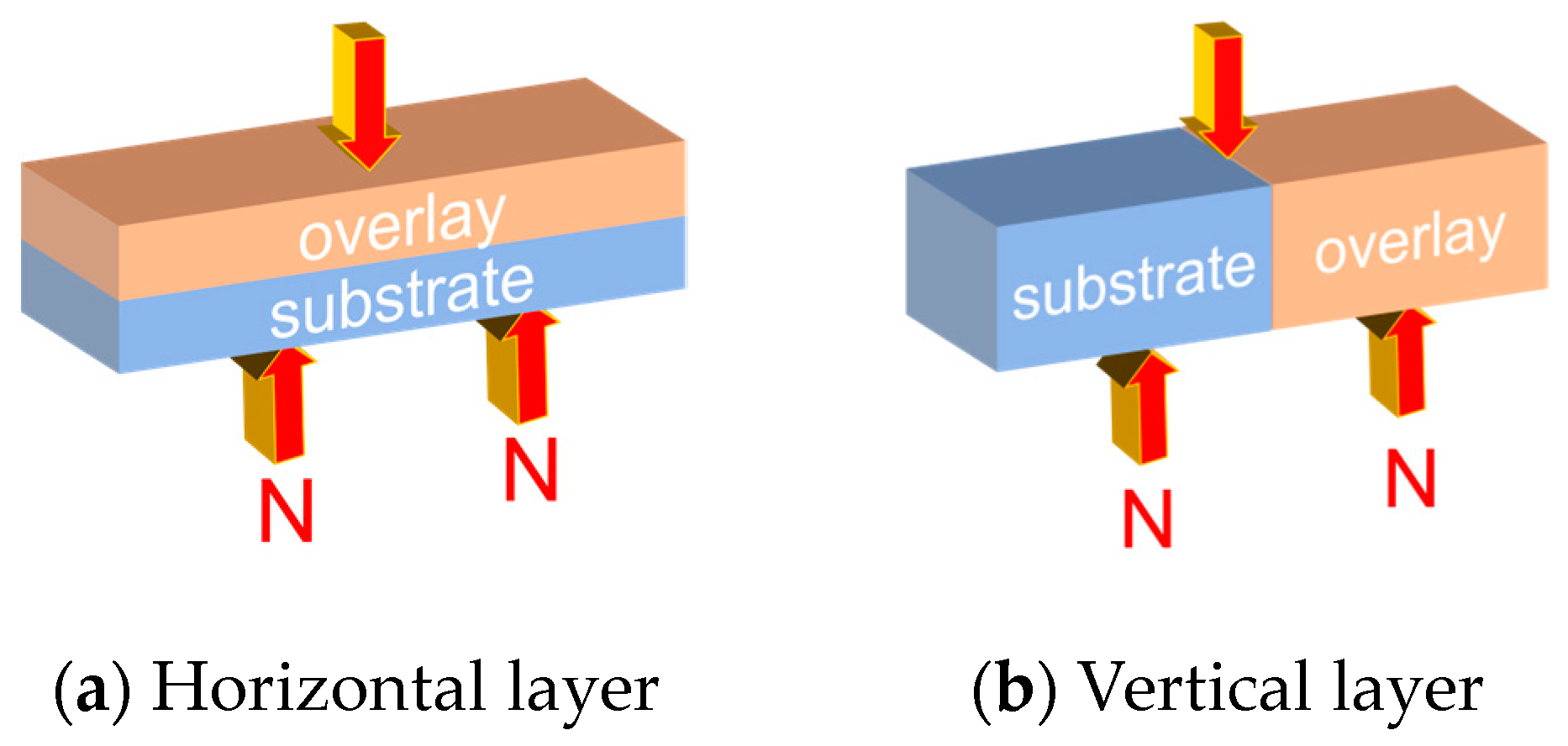
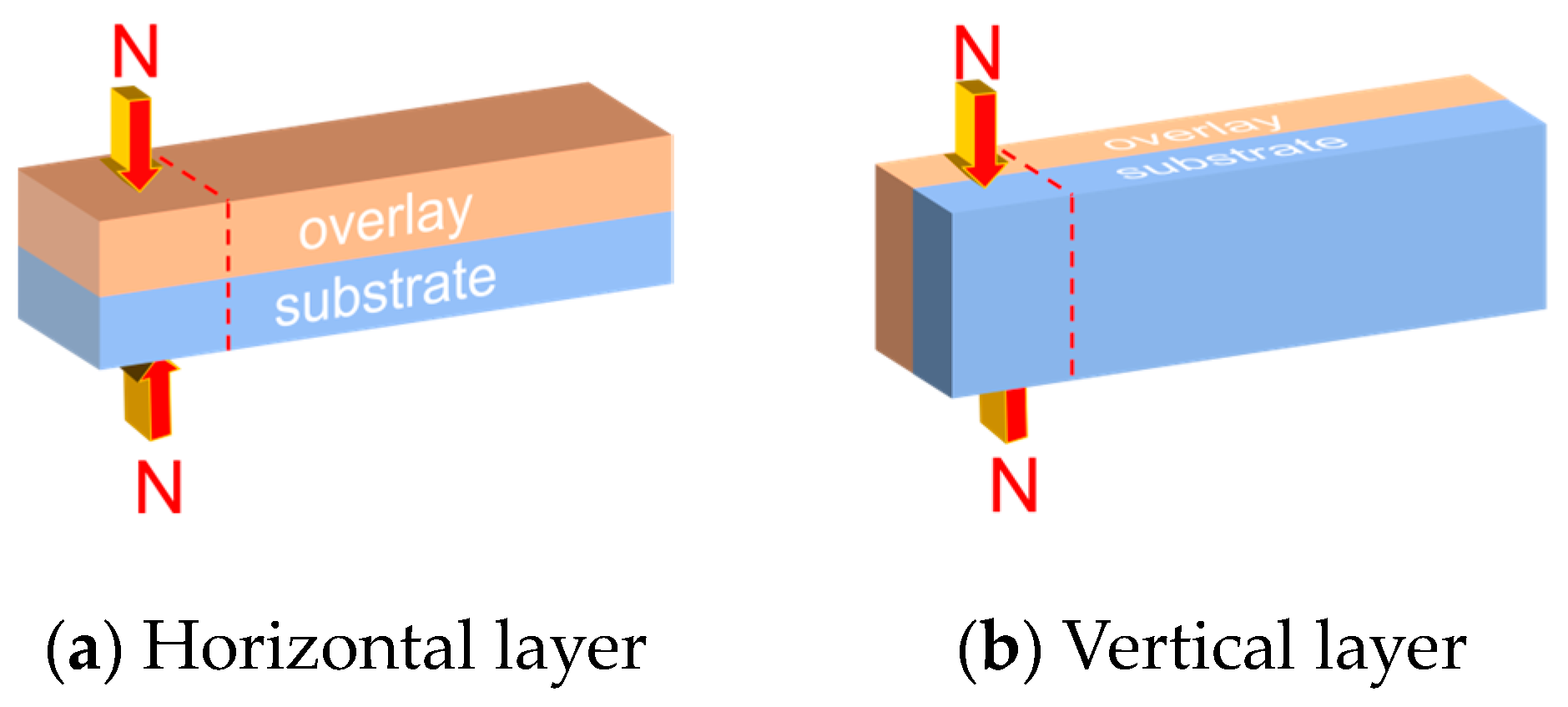
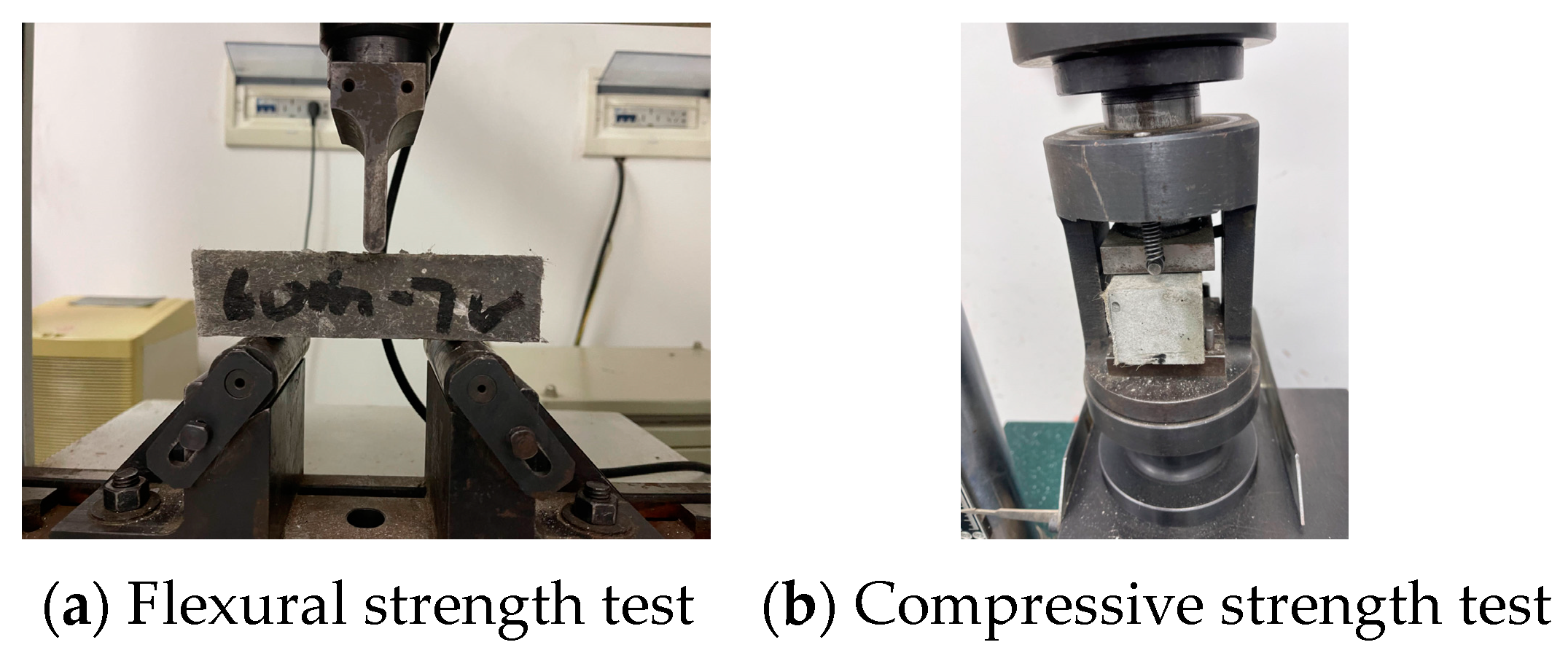
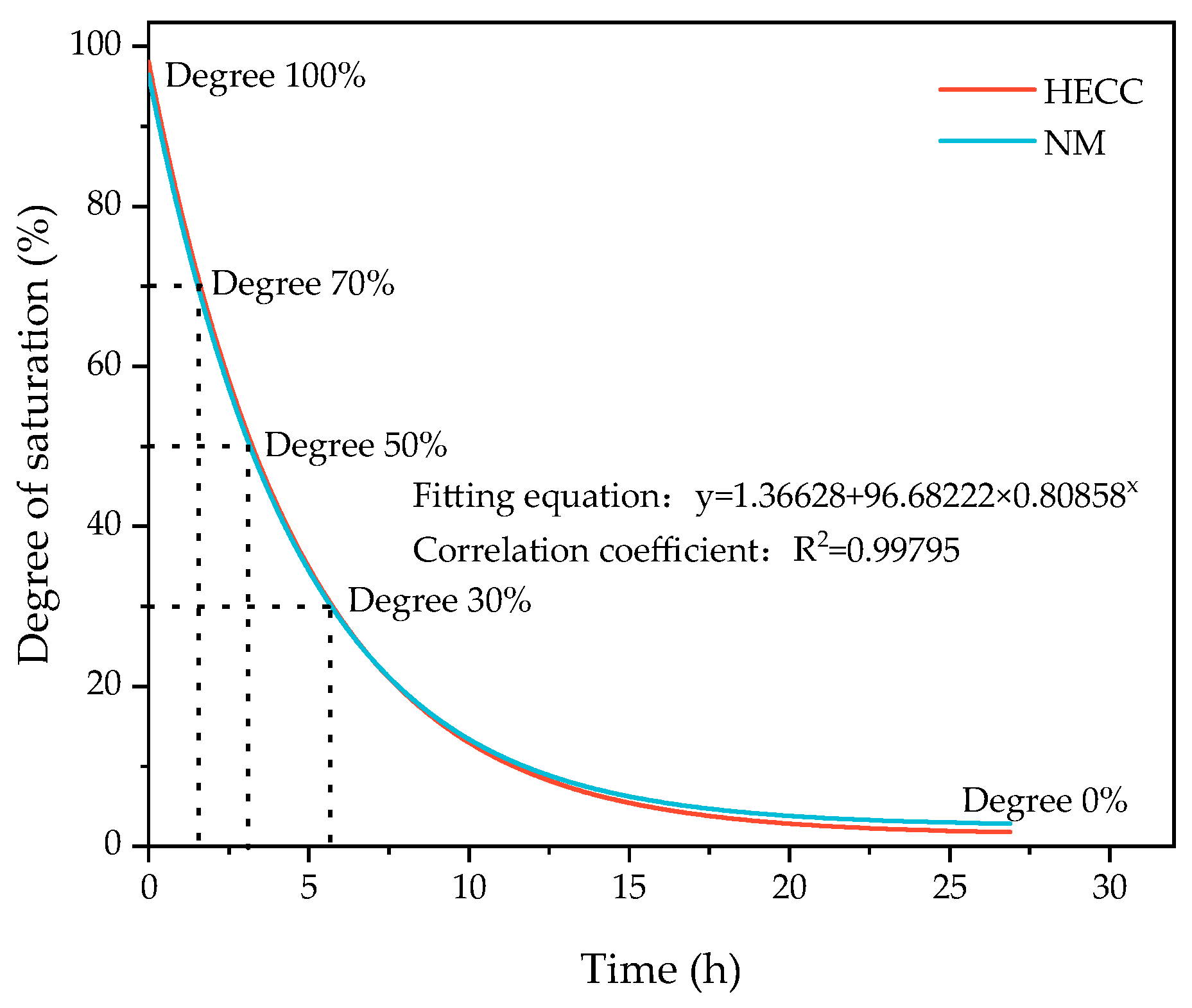
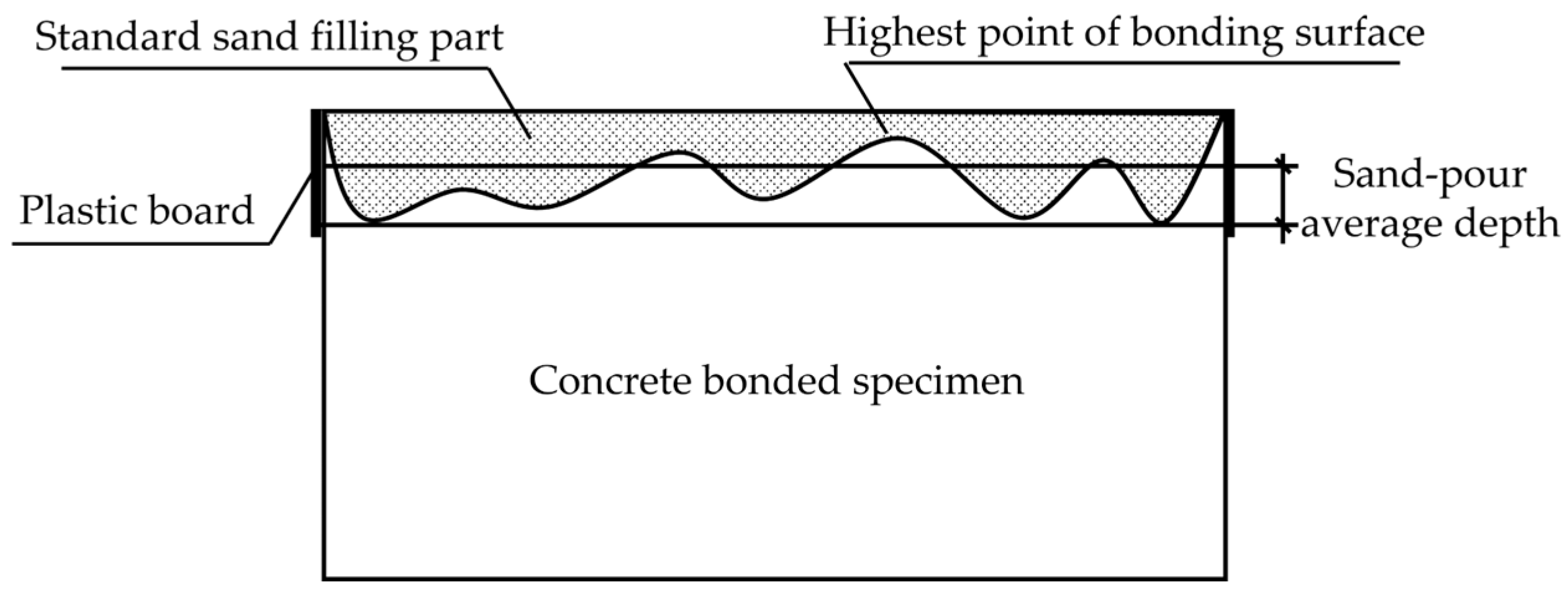

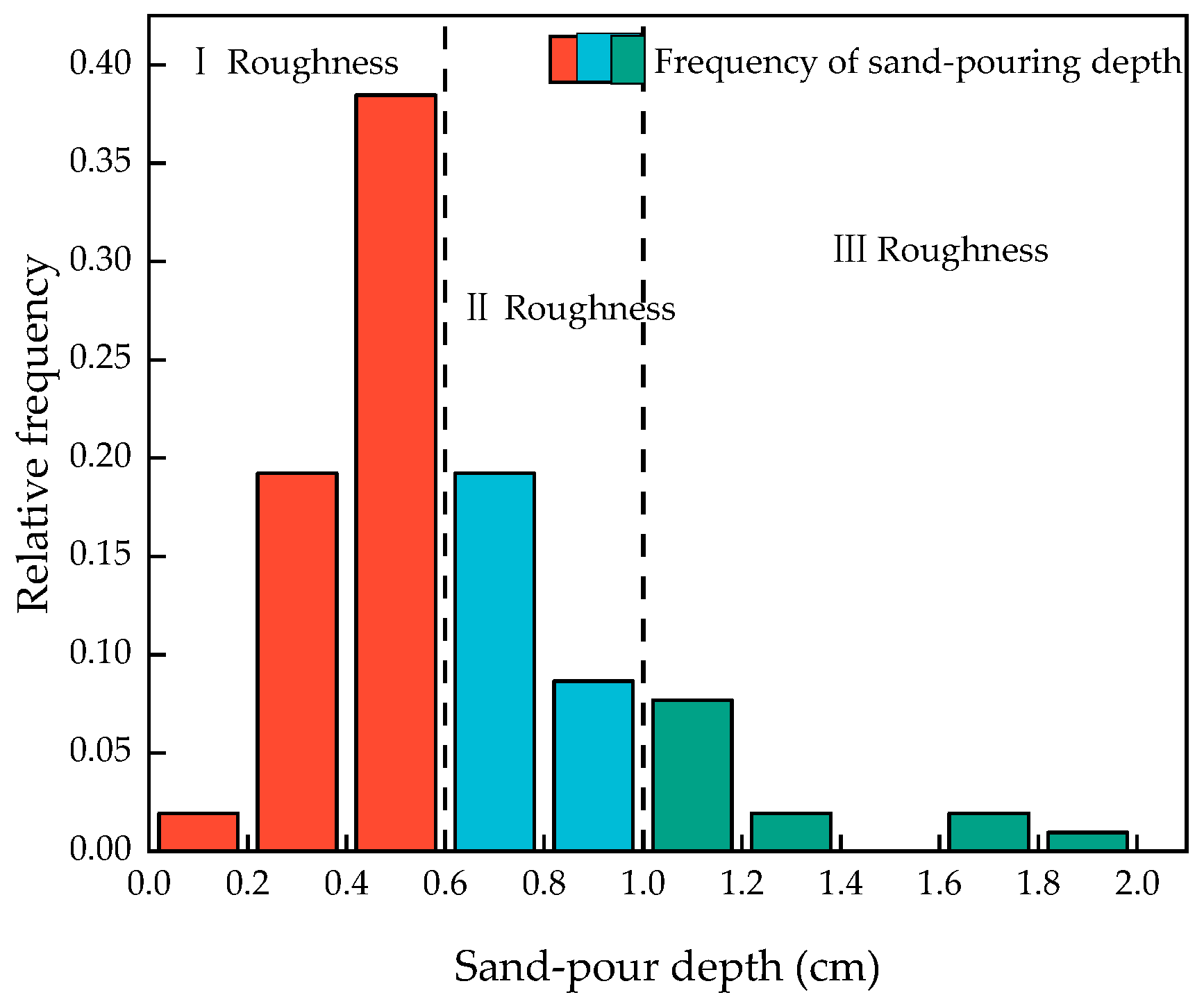

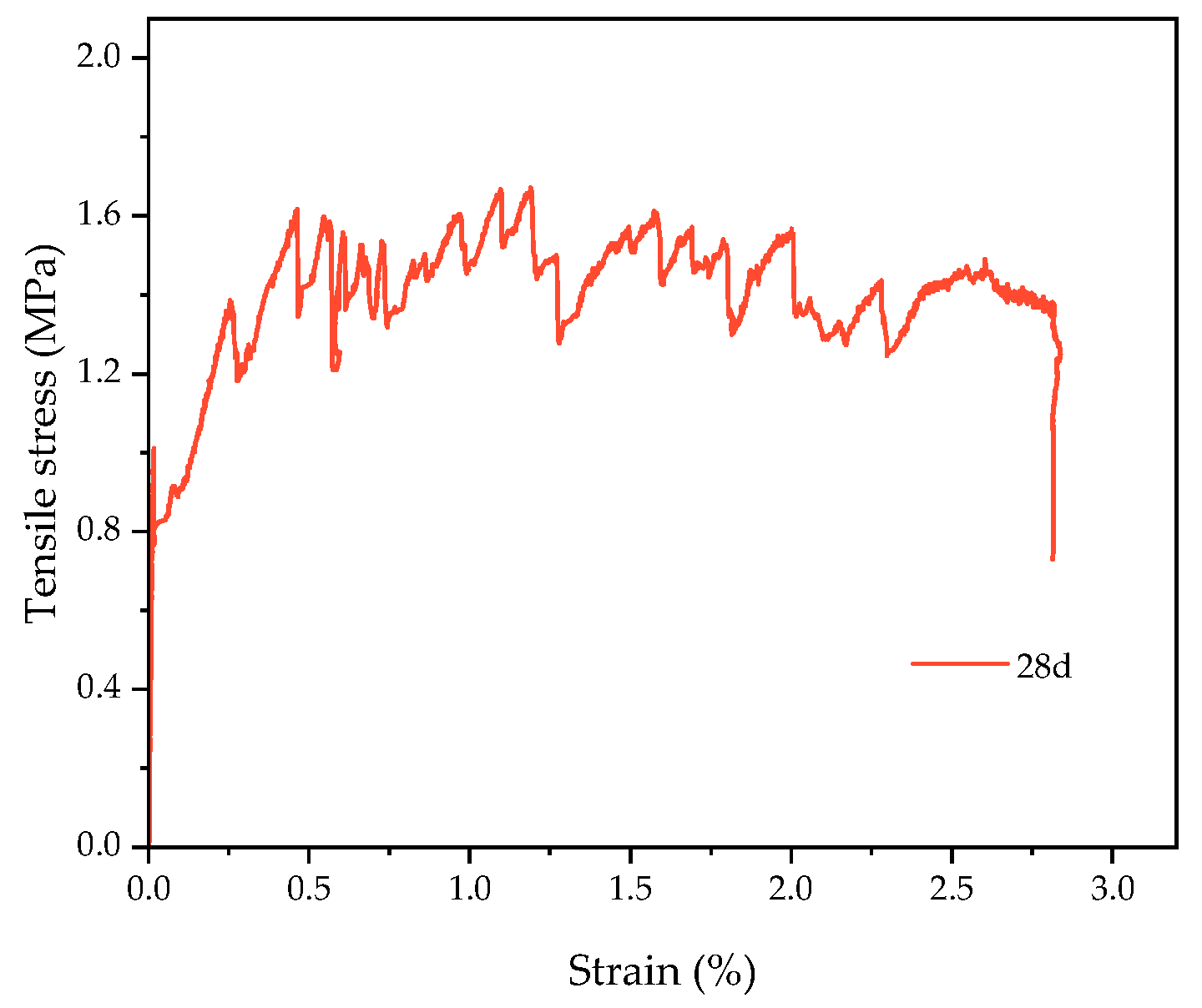
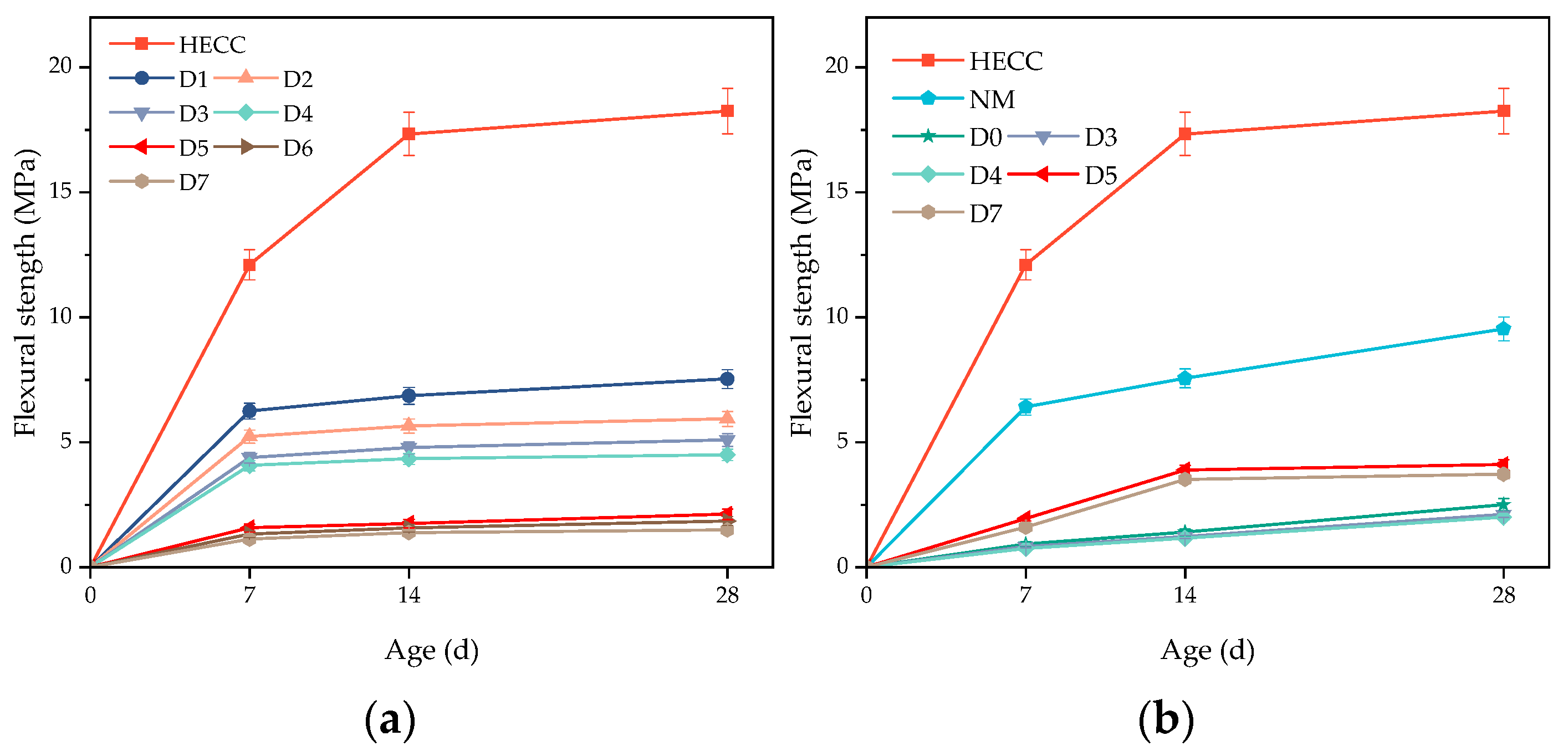
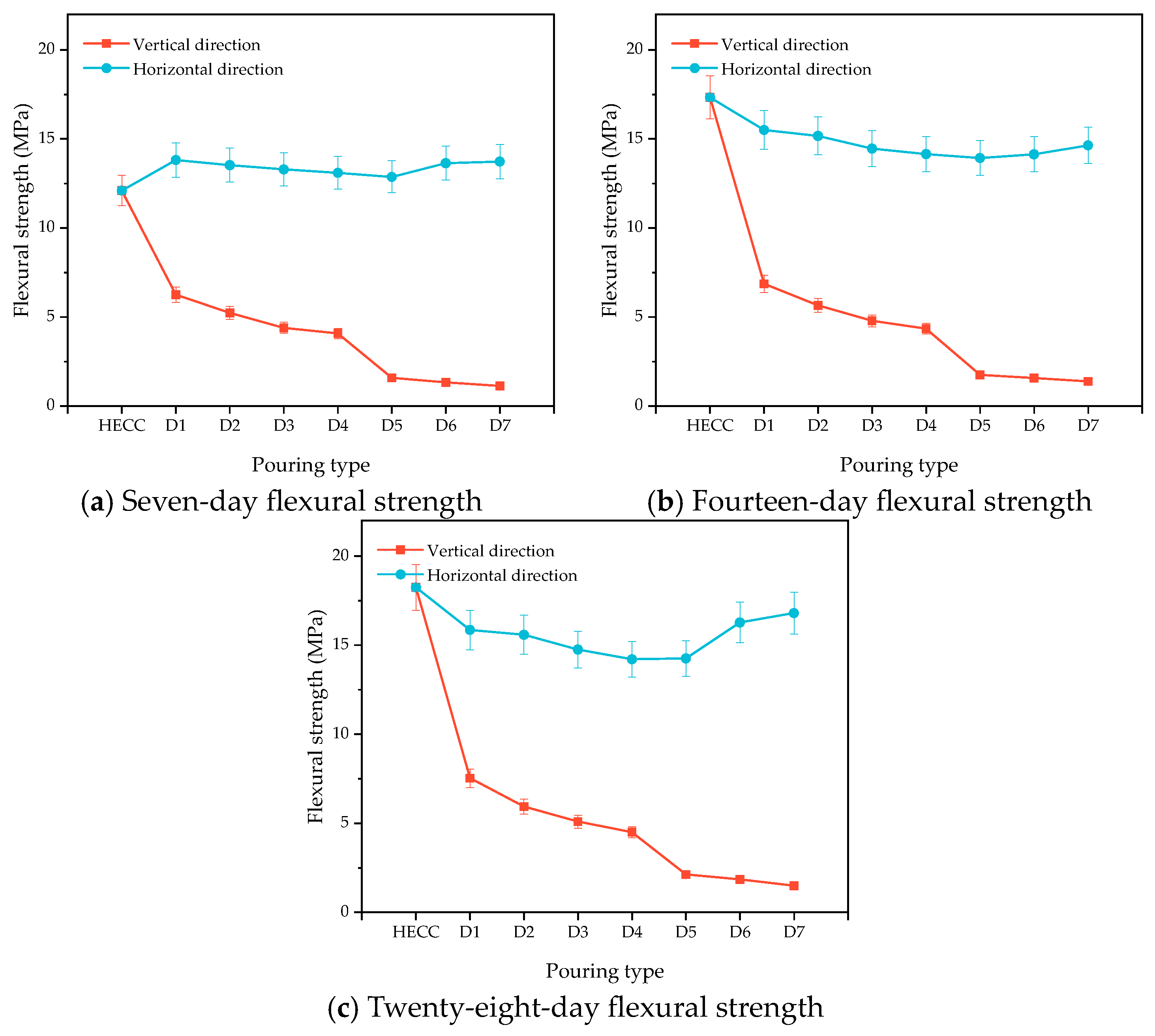
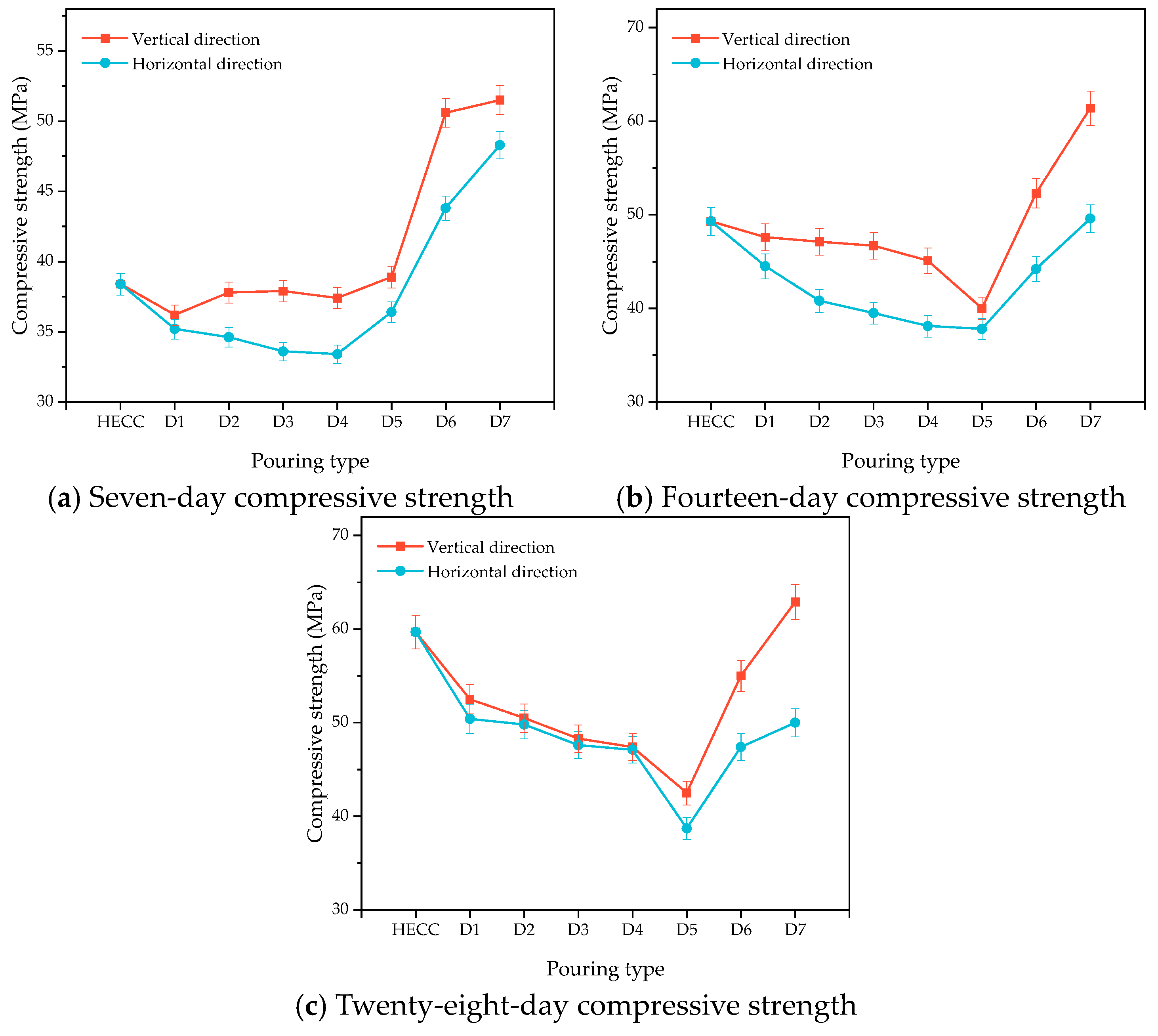
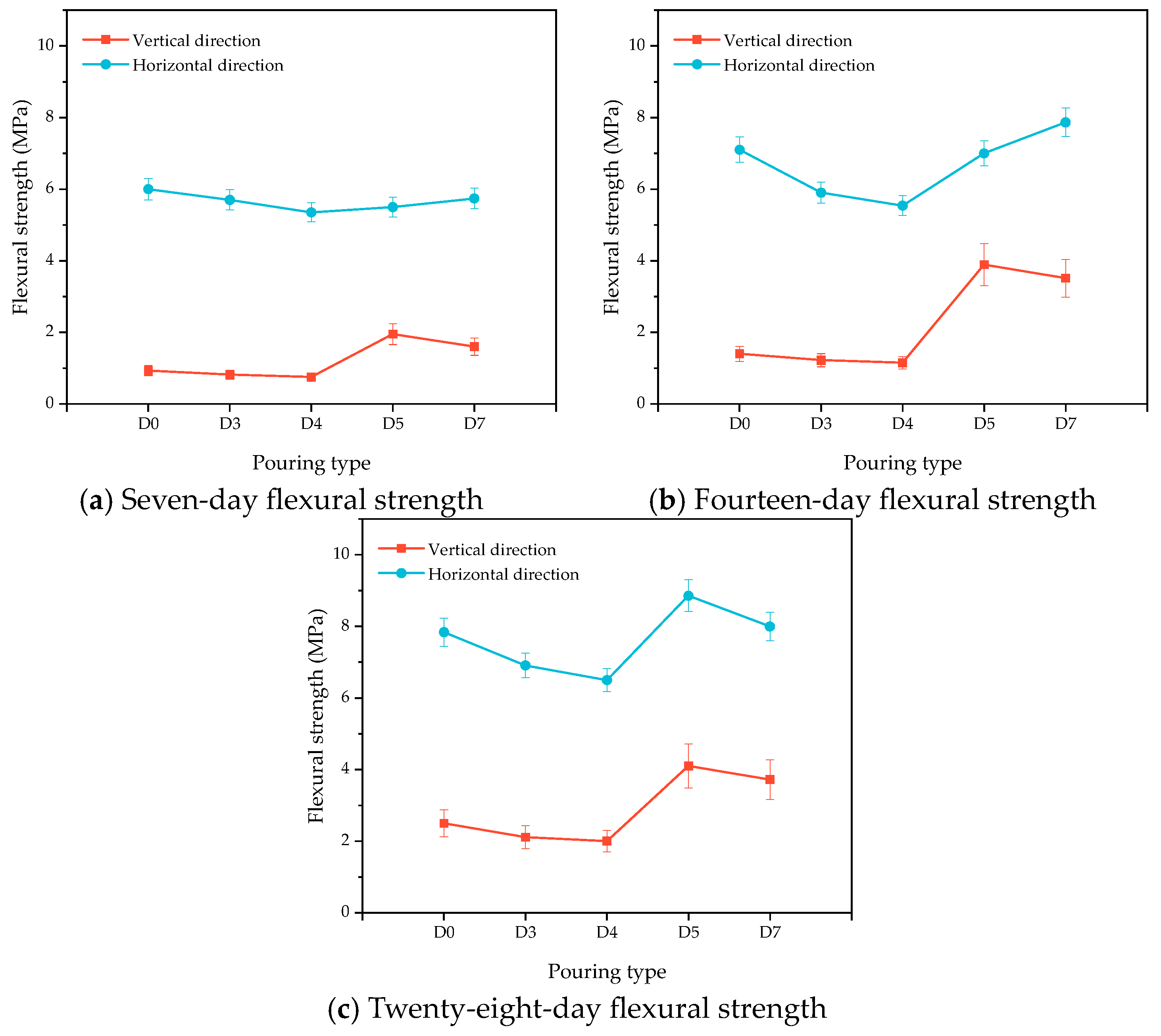
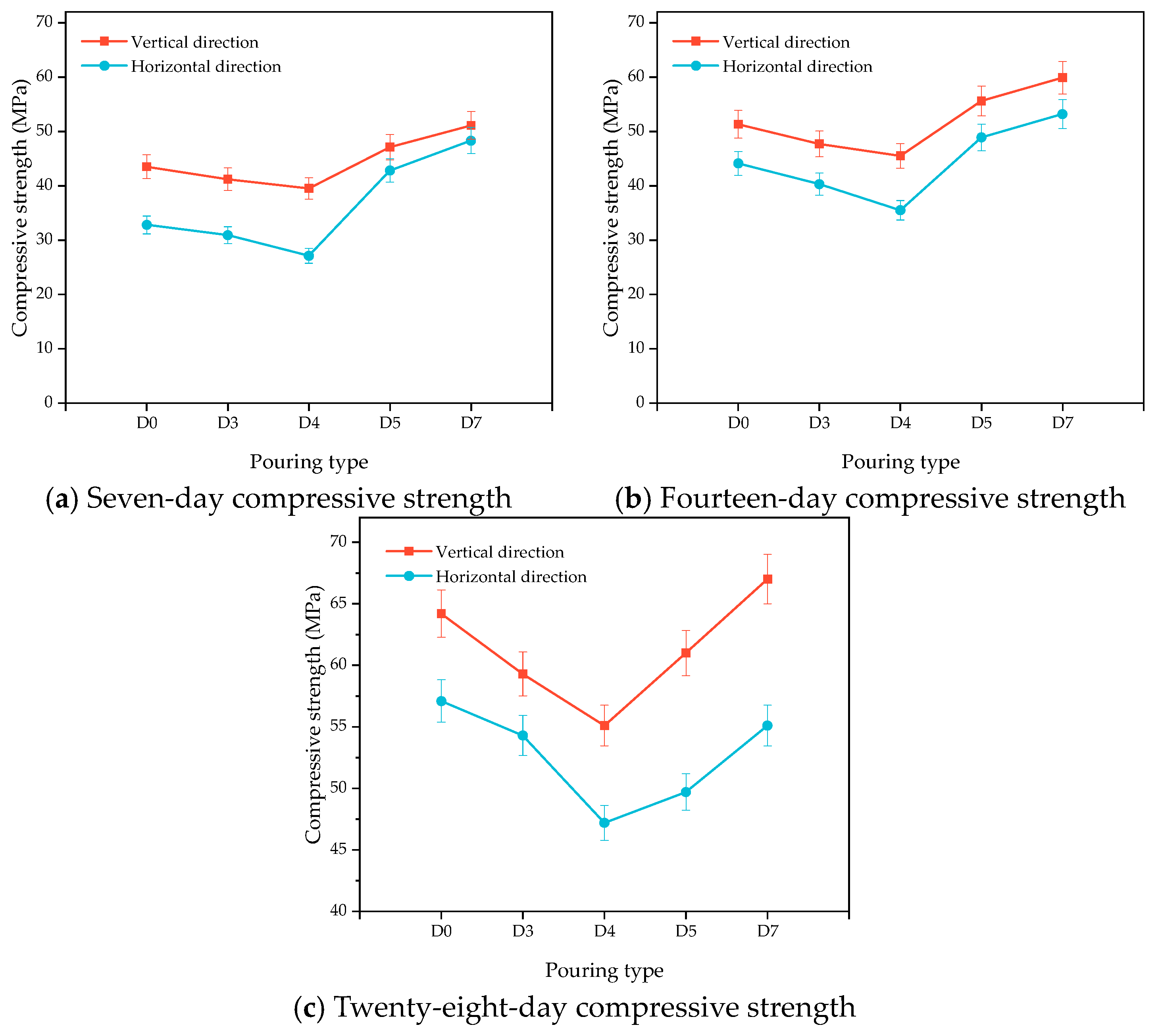

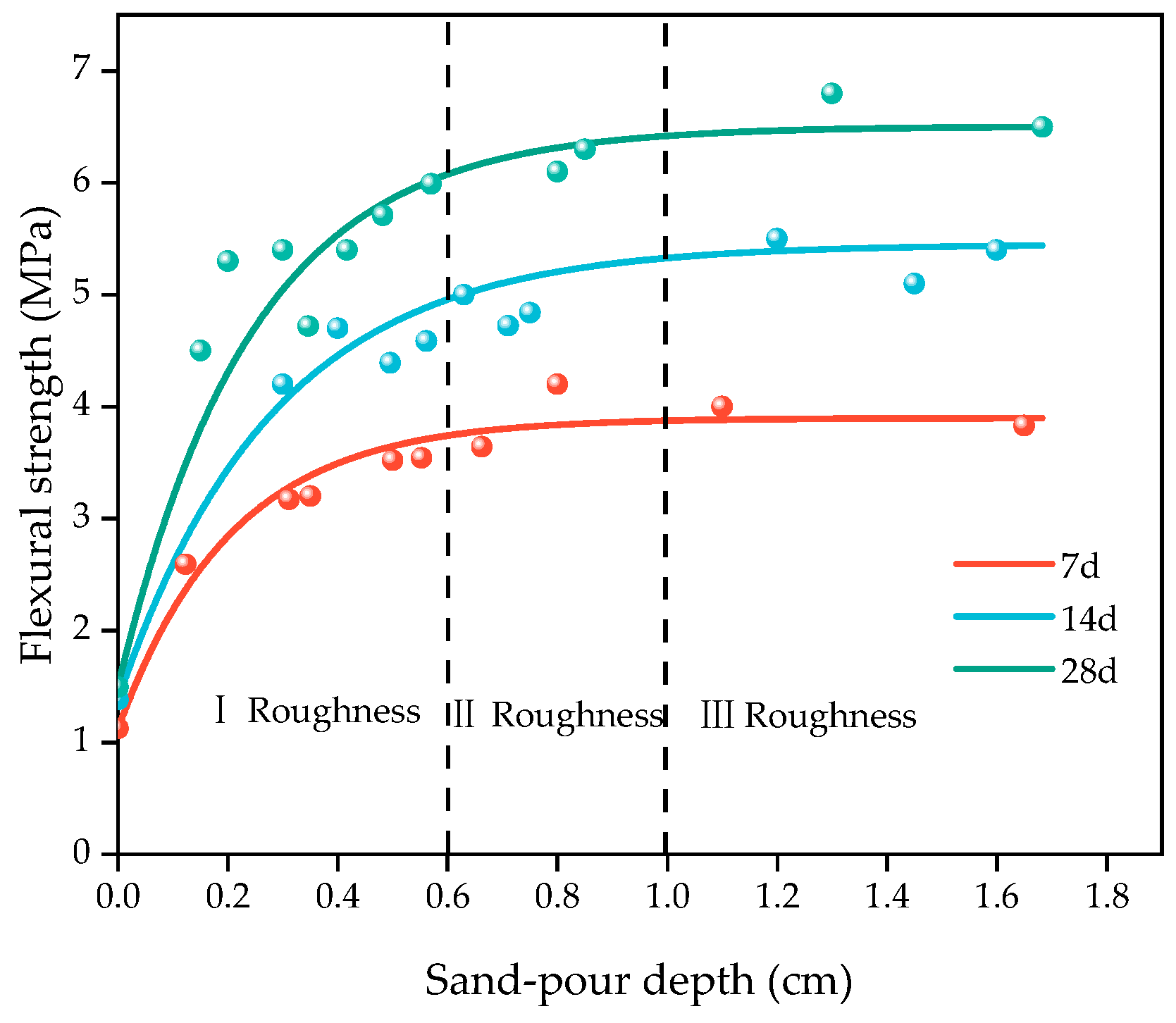
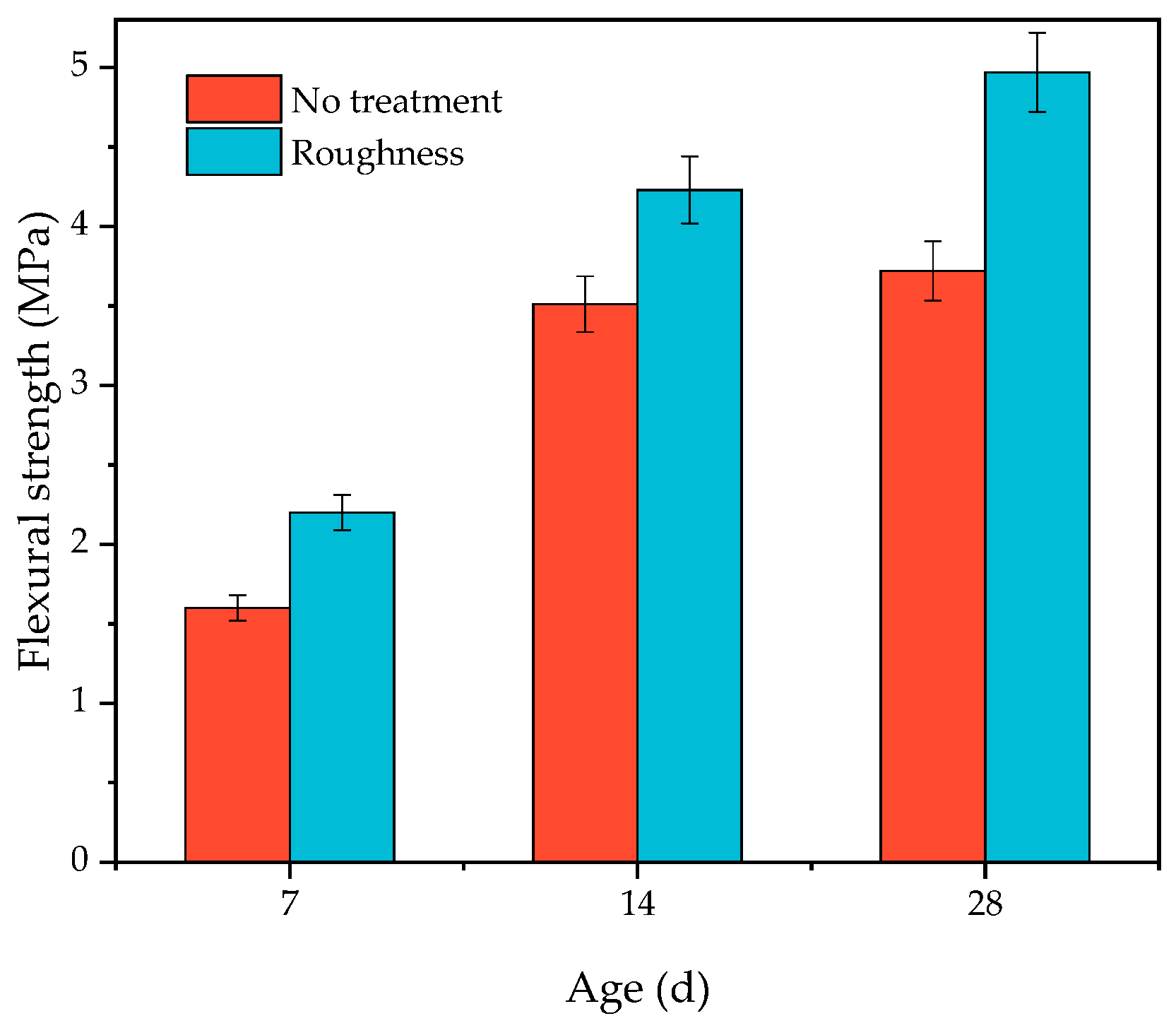
| Type | Blain Area | Setting Time | Compressive Strength | Flexural Strength | |||
|---|---|---|---|---|---|---|---|
| (m2/kg) | Initial Setting Time (min) | Final Setting Time (h:min) | (MPa) | (MPa) | |||
| 3 Days | 28 Days | 3 Days | 28 Days | ||||
| Esheng42.5 | 334 | 181 | 4:19 | 27.5 | 47.4 | 6.3 | 8.6 |
| GB175-2020 | ≥300 | ≥45 | ≤10:00 | ≥17.0 | ≥42.5 | ≥3.5 | ≥6.5 |
| Type | Fineness (%) | Blain Area | Moisture Content (%) | Ratio of Water Requirements (%) | Compressive Strength Ratio (%) | Ignition Loss (%) | |
|---|---|---|---|---|---|---|---|
| (m2/kg) | 7 Days | 28 Days | |||||
| Jintang | 6.8 | 390 | 0.1 | 95 | 68 | 75 | 2.8 |
| DL/T5055-2007 | ≤12.0 | – | ≤1.0 | ≤95 | – | – | ≤5.0 |
| Oxide | Cement | Fly Ash |
|---|---|---|
| SiO2 | 21.41 | 48.33 |
| Al2O3 | 4.95 | 17.58 |
| Fe2O3 | 3.81 | 8.63 |
| CaO | 59.36 | 8.73 |
| MgO | 0.94 | 2.89 |
| K2O | 0.75 | 1.41 |
| Na2O | 0.13 | 0.75 |
| SO3 | 3.11 | 1.86 |
| LOI | 2.59 | 3.44 |
| Na2Oeq | 0.62 | 1.68 |
| Type | Diameter (μm) | Length (mm) | Density (g/cm) | Breaking Strength (MPa) | Elastic Modulus (GPa) | Fracture Elongation (%) |
|---|---|---|---|---|---|---|
| Wanwei | 37 | 12 | 1.3 | 1800 | 34 | 6.6 |
| Particle Size Range | 1.25~0.63 | 0.63~0.32 | 0.32~0.16 | <0.16 |
|---|---|---|---|---|
| Distribution | 25.5 | 22.1 | 20.6 | 19.2 |
| Type | SP | DL/T 5100-2014 | |
|---|---|---|---|
| Dosage (%) | 0.8 | \ | |
| Water-reducing rate (%) | 26.9 | ≥25 | |
| Gas content (%) | 2.3 | ≤2.5 | |
| Bleeding rate ratio (%) | 30 | ≤60 | |
| Setting time difference (min) | Initial setting time | +152 | ≥90 |
| Final setting time | +132 | \ | |
| Compressive strength ratio (%) | 3 days | 145 | \ |
| 7 days | 140 | ≥140 | |
| 28 days | 137 | ≥130 | |
| Shrinkage ratio (%) | 97 | ≤110 | |
| Type | Cement | Fly Ash | Artificial Sand | Water | SP | VMA | PVA Fiber (Volume/%) |
|---|---|---|---|---|---|---|---|
| HECC | 1 | 1 | 1.5 | 0.66 | 0.016 | 0.0001 | 2 |
| NM | 1 | 1 | 2.5 | 0.66 | 0.016 | \ | \ |
| Number | Meaning |
|---|---|
| D0 | No pouring interval time |
| D1 | 20 min pouring interval time |
| D2 | 40 min pouring interval time |
| D3 | 60 min pouring interval time |
| D4 | 2.5 h pouring interval time |
| D5 | 7-day pouring interval time |
| D6 | 14-day pouring interval time |
| D7 | 28-day pouring interval time |
Disclaimer/Publisher’s Note: The statements, opinions and data contained in all publications are solely those of the individual author(s) and contributor(s) and not of MDPI and/or the editor(s). MDPI and/or the editor(s) disclaim responsibility for any injury to people or property resulting from any ideas, methods, instructions or products referred to in the content. |
© 2023 by the authors. Licensee MDPI, Basel, Switzerland. This article is an open access article distributed under the terms and conditions of the Creative Commons Attribution (CC BY) license (https://creativecommons.org/licenses/by/4.0/).
Share and Cite
Wang, Y.; Li, J.; Shi, Y. Study on Influencing Factors of Hydraulic Engineered Cementitious Composites Layer Bonding Performance. Materials 2023, 16, 6693. https://doi.org/10.3390/ma16206693
Wang Y, Li J, Shi Y. Study on Influencing Factors of Hydraulic Engineered Cementitious Composites Layer Bonding Performance. Materials. 2023; 16(20):6693. https://doi.org/10.3390/ma16206693
Chicago/Turabian StyleWang, Yupu, Jiazheng Li, and Yan Shi. 2023. "Study on Influencing Factors of Hydraulic Engineered Cementitious Composites Layer Bonding Performance" Materials 16, no. 20: 6693. https://doi.org/10.3390/ma16206693





